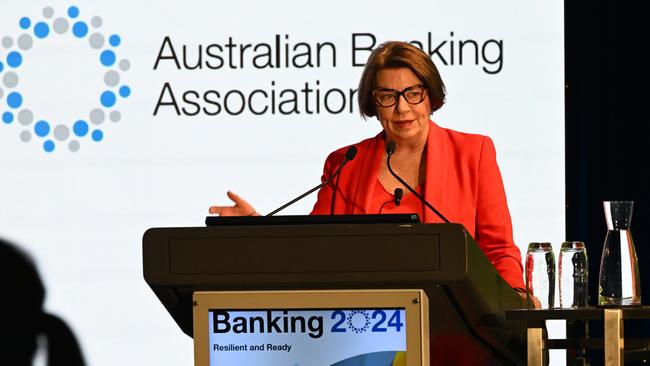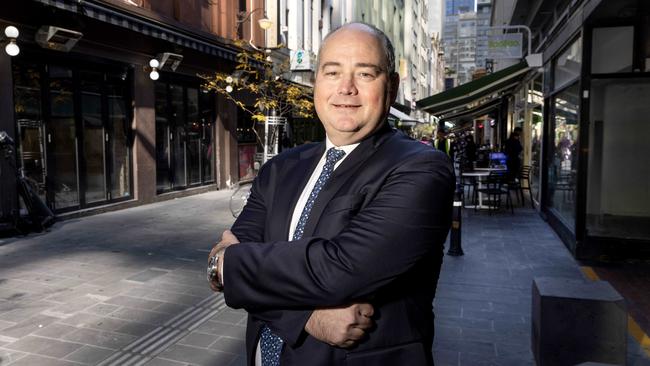
But there’s another battle being waged in this crackdown, and banks are determined to triumph even if it means consumers lose.
About 600,000 Australians lost $2.74bn to scammers last year, falling victim to a variety of frauds such as bogus investments, romances and remote access scams.
The good news is that the losses were down on the previous year, so attempts to thwart scammers appear to be having some effect.
But we’re well behind where we need to be. The $2.74bn lost in 2023 was down on the $3.15bn scammers stole in 2022, but it was a 50 per cent rise on 2021’s losses and 300 per cent more than Australians were fleeced in 2020.
The banking industry, particularly the majors, have put in place a raft of measures and protections to stop scammers, adding friction to payments and limiting transfers to high-risk crypto exchanges.
“Scams are a scourge on our society … Banks have a range of tactics and tools they deploy to shield Australians from scammers such as payment warnings and delays to the blocking of transfers to dodgy scam accounts,” Anna Bligh said this month as the Australian Banking Association launched a new anti-scam campaign.
“

Customers will start seeing more payment delays or warnings when transferring money to someone they haven’t paid before.
“This will allow banks to spot red flags and help them check that money isn’t going directly to a scammer.”
The campaign comes after industry leaders, such as NAB chief executive Andrew Irvine, issued various warnings that criminals and technology were becoming more sophisticated, heightening the risk of scam losses.
“
The advent of capabilities like AI and generational AI are going to increase the threat vectors and the sophistication of the attacks,” Irvine said last month.
“So we’re going to have to continue to work really, really hard as an industry and I think we’re going to have to work really, really hard on educating Australians at the same time.”
NAB’s move to add “friction” to its digital payment processes, in the form of payment alerts, has already saved customers from sending more than $100m to potential scammers in the past 15 months. Other banks have put similar measures in place.

At CBA, greater investment in security measures – $800m in the 12 months to June 30 – has resulted in scam losses falling 50 per cent. The bank’s “NameCheck” security tool, which verifies account-to-account payments, has already prevented $410m in mistaken payments and scams.
Westpac, meanwhile, recently signed a deal with Optus under which the bank’s customers take calls through their banking app, in a bid to defeat scammers posing as staff.
So we know the banks are doing a lot to stop scammers in their tracks.
So too is the federal government. Since being elected, Labor has set up the National Anti-Scam Centre and it is legislating a scams code framework and new mandatory industry codes that will put pressure on banks, telecommunication providers and social media platforms to do their part in stopping scammers.
But crucially, the government has stopped short of requiring banks to compensate customers who suffer scam losses. This is a big win for banks and is at odds with new measures in the UK and similar measures being considered in New Zealand and Singapore.
What it means is that consumers are left footing the bill for scam losses, with just 2-5 per cent of losses being reimbursed by the banks, according to Consumer Action Law Centre chief executive Stephanie Tonkin.
“All these (anti-scam) measures from the banks are so welcome, but they’re happening in a piecemeal way and they’re slow to come online,” Tonkin says.

“We’ve had the banks agree to a Scam-Safe Accord last year, but we’re not going to see those measures implemented until the end of 2025. So it’s far, far too slow in terms of implementing these measures by the banks, and also far too slow in government developing the laws that force banks to improve their protections of customer money.”
In the UK, meanwhile, a mandatory code will be in place from October this year that will require banks to reimburse customers for scam losses.
Tonkin wants a similar measure put in place here so victims are not left carrying the losses themselves.
“The idea is to put the banks on the hook for the scam losses and that will incentivise the level of investment needed to fortify their systems,” she says.
“We’re being forced to transact online. We’re being forced to use these online banking platforms. We don’t have other options, but they don’t have the same level of protection that the safety in the bricks and mortar version of the bank has.”
The banking industry, unsurprisingly, is pushing back against such a move, arguing the war on scams needs to be a collective effort. The government is singing the same tune. (You can almost hear the sighs of relief from bank CEOs.)
Indeed, federal Assistant Treasurer Stephen Jones says such a scheme would only make Australia a more attractive location for scammers. He doesn’t want to let telecommunication firms and social media platforms off the hook, he says.
Tell that to the victims carrying heavy losses.




The war on scams is in full force. Banks and the government have stepped up their protective measures to shield Australians from fraud losses – and there have been some early wins.